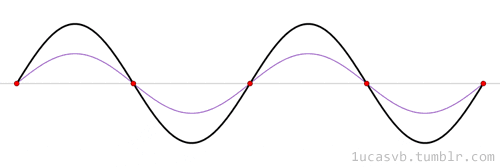Case Study - Engine Washing
Engine reconditioning is clearly one of the toughest works if proper equipment and detergents are not used. Not only will it take a lot of time, effort and persistence, but it will also be expensive with human intervention and handling. Without proper cleaning of the engine block, it becomes almost impossible to find out hairline cracks and flaws that are needed to be repaired. Regardless of what kind of engine you work on; cleaning remains the primary step before processing the work further.
Cleaning of the Engine Parts or Engine Block needs to be done in certain stages depending upon the type of contamination and condition of the engine. Often, an engine that requires reconditioning is subjected to accumulated dirt, grease, carbon, corrosion, oil & grime. To remove all such contaminants from the parts, one requires specially formulated detergents and rigorous man hours. The labor & expenses can eat up-to 10% or more of the engine refurbishment cost. In some cases; cleaning may account for as much as 20% to 30% of the overhead cost when you factor in time, labor, cleaning chemicals, cleaning equipment, water & electricity. It is observed that shops and factories that are engaged in cleaning of old engines often tend to spend a lot on rebuilding it but most importantly still

unable to achieve the desired results.


Many companies / shops use caustic soda dips, degreasing detergent soaps, acid washers, jet spraying tanks and many types of solvents to loosen the dirt, grime, oil and also to remove the rust. Sometimes they work well on aluminum, sometimes they work well on cast iron however sometimes all these things combined together also does not help achieve the results. Solvent washing is effective however most solvents are flammable and in-famous for releasing volatile organic compounds which makes them dangerous to use.
HOW ULTRASONIC CLEANING CAN HELP REDUCE TIME, LABOR & COST WITH BETTER CLEANING RESULTS!
Ultrasonic Cleaning is a water-based cleaning process which makes them a better choice in areas with air quality concerns than solvents. Most water-based detergents and chemicals are also nontoxic, nonhazardous and nonflammable. Water is also recyclable, relatively cheap and much easier to dispose of. Contaminants in the water can be removed chemically, mechanically or biologically (bioremediation), or concentrated by evaporating away most of the water. The only downside is that the concentration of the cleaning solution has to be monitored and maintained for optimum cleaning performance. This means adding make-up water periodically, monitoring the concentration of the cleaning solution, and using a skimmer and/or filter to extend the life of the solution (which can double or triple the life of the cleaning solution).


Ultrasonic Cleaning technique is a tank made Stainless Steel that contains heated water along with suitable detergent solution as per the material make of the engine block and as per the nature of the contamination on part. When the dirty component is immersed in an ultrasonic tank, upon activation, thousands to tiny bubbles are formed inside the ultrasonic bath which creatives gentle scrubbing action on the surface of the component that sucks out any kind of dirt, dust, grime, oil , rust etc.
TRANSONIC – Ultrasonic Cleaning Machine Benefits
-
Reduced labor cost
-
Reduce Water usage
-
Reduced cleaning time
-
Reduce Chemical Wastage
-
Reduced Carbon Foot print
-
Consistent Cleaning results
POTENTIAL APPLICATIONS
-
Petrol and Diesel engine components
-
Cylinder heads and engines blocks – including V8 blocks
-
Fuel injectors – Diesel Injection pumps
-
Emission units – EGR valves
-
Metal, fabric and ceramic filters
-
Heat exchanges and intake manifolds
-
Carburetors and fuel supply pumps
-
Hydraulic pump and motor bodies and parts
-
Hydraulic control valves Outboard and motorcycle heads and barrels
These vacuum bubbles are called “Cavitation Bubbles” and they are responsible for the cleaning action in an ultrasonic cleaning machine. The best part about this machine is the time saving, energy saving, low labor and thereby lower cost of cleaning. At the same time, with proper cleaning solution, an Ultrasonic Cleaning process will deliver consistent result every time without leaving any after work.
Cleaning Solutions:
We supply organic acid-based cleaning chemicals along with neutral, alkaline & highly alkaline cleaning chemical concentrate chemicals to be used in conjunction with the Ultrasonic Cleaning machine.
Usually organic acid-based chemicals are used for pre-cleaning of engine parts for carbon removal, descaling and rust removal followed by alkaline washing in Ultrasonic Tank.
TRANSONIC ADVANTAGE
We manufacture custom built Ultrasonic Cleaning Tanks to suit the size of the engine block to be cleaned. The tanks have choices of Stainless Steel 304 / 316 L Grade with 2mm – 3mm sheet gauge thickness. Optional features like automatic dunking, oil skimming & filtration systems are also offered.


